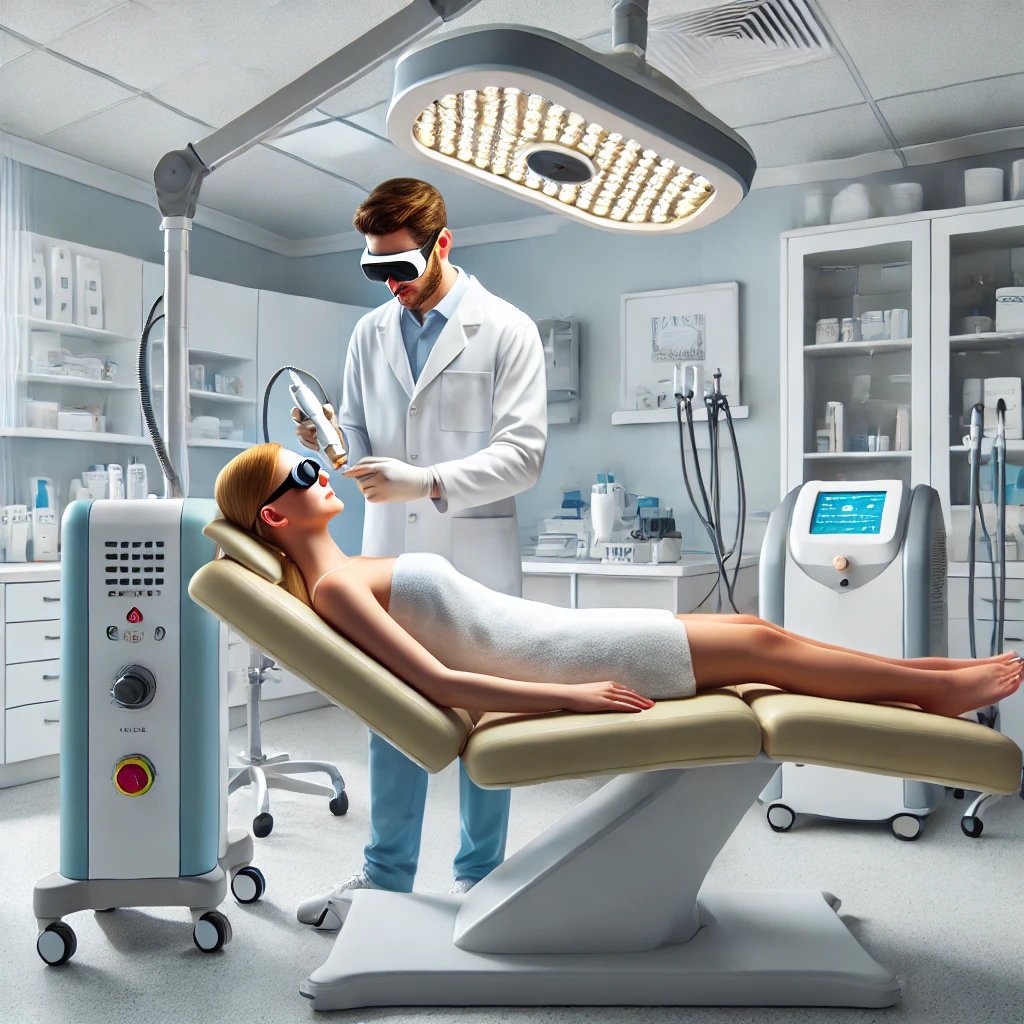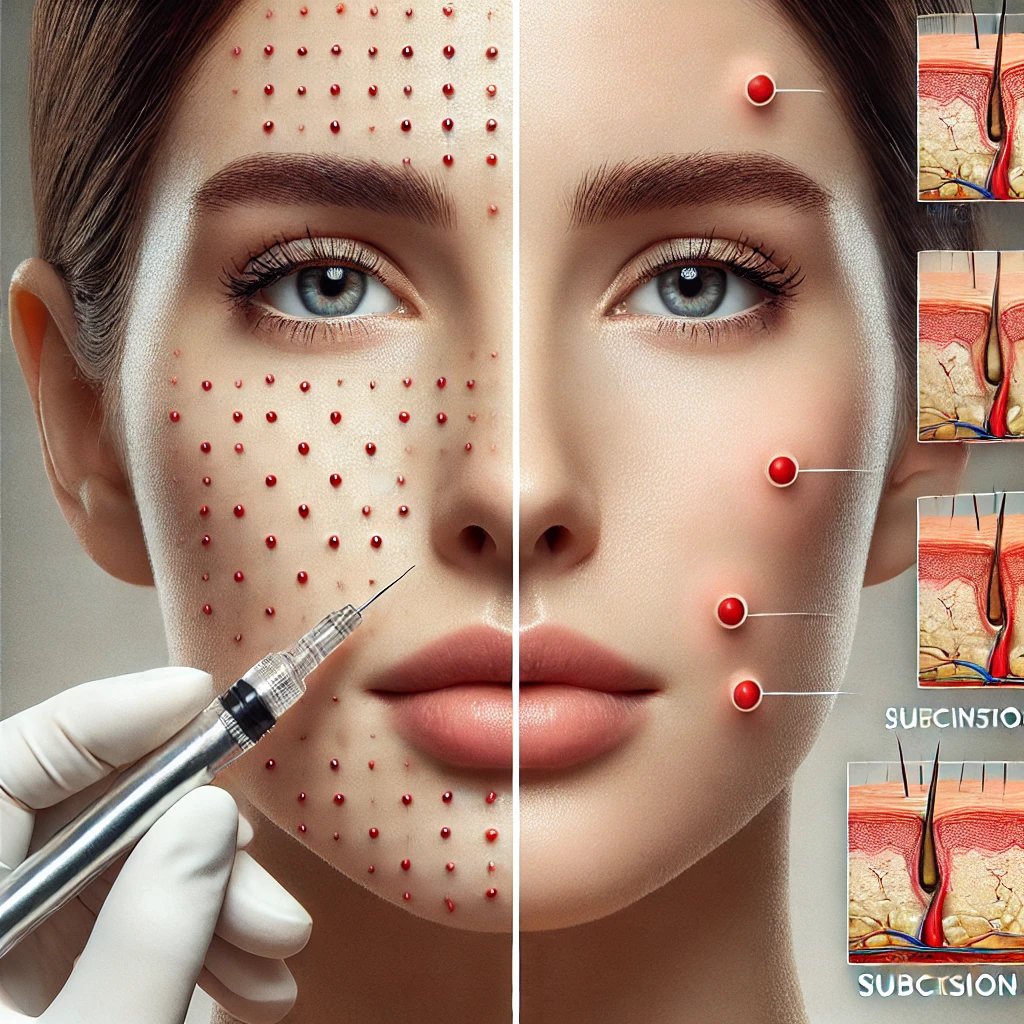Botox
Botox injections are a popular cosmetic procedure used to reduce the appearance of fine lines and wrinkles. The treatment involves injecting a purified form of botulinum toxin into specific facial muscles. This temporarily relaxes the muscles, smoothing out wrinkles and preventing new lines from forming. Common areas treated with Botox include the forehead, crow's feet around the eyes, and frown lines between the eyebrows. The procedure is quick, minimally invasive, and typically takes just a few minutes with no downtime. Results can be seen within a few days and typically last for three to six months, providing a refreshed, youthful appearance.
The following areas can be treated with Botox:
Laser & Light
Laser and IPL (Intense Pulsed Light) therapy are advanced skin treatments used to address various skin concerns, including sun damage, pigmentation, and vascular lesions. Laser therapy uses focused beams of light to target specific areas of the skin, promoting collagen production and skin rejuvenation. IPL, on the other hand, delivers broad-spectrum light pulses to penetrate the skin, treating multiple skin issues simultaneously. Both treatments are non-invasive and can improve skin tone, texture, and clarity. They are effective for reducing redness, acne scars, and fine lines. Sessions are typically quick, with minimal downtime, and multiple treatments may be required for optimal results.
Microneedling
Microneedling is a minimally invasive cosmetic procedure designed to rejuvenate the skin by stimulating collagen production. It involves using a device with fine, sterile needles to create tiny punctures in the skin's surface. These micro-injuries trigger the body's natural healing process, promoting the formation of new collagen and elastin. The treatment can improve skin texture, reduce the appearance of fine lines, acne scars, and hyperpigmentation. Microneedling is suitable for all skin types and can be performed on various areas, including the face, neck, and décolletage. The procedure typically requires minimal downtime, and multiple sessions may be needed for optimal result
Sclerotherapy
Sclerotherapy is a medical procedure used to treat varicose and spider veins in the legs. It involves injecting a sclerosing solution directly into the affected veins, causing them to collapse and eventually be absorbed by the body. This solution irritates the vein lining, prompting it to seal shut and fade from view over time. Sclerotherapy is a minimally invasive procedure performed in a clinical setting, typically requiring no anesthesia. The treatment is quick, with minimal discomfort, and patients can return to normal activities shortly after. Multiple sessions may be necessary to achieve optimal results, leading to smoother, clearer legs and improved circulation.
Scar treatments
Treating scars requires a tailored approach based on scar depth. Superficial scars may be treated with creams, lasers, and needling, while mid-depth scars require subcision or fillers. Deep scars often need more intensive methods like the CROSS technique, punch excision, or fillers. Multiple treatments are often necessary for best results.
Microneedling for Acne scarring
Subscision for deeper scarring
Punch excision for icepick scarring
Injections for raised scars
Laser treatments for discoloured scars
Light cautery for skin tags of the face and neck
Light cautery is a dermatological procedure used to remove small skin lesions with precision. The technique involves applying a fine, heated cautery device to the targeted lesion, delivering controlled thermal energy to the area. This heat effectively destroys abnormal tissue while minimizing damage to surrounding healthy skin. The procedure is performed under local anesthesia to ensure patient comfort and typically results in minimal scarring. Light cautery is ideal for treating superficial lesions, such as skin tags or small warts, and offers a quick recovery with a low risk of complications, making it a popular choice for minor skin surgeries.





